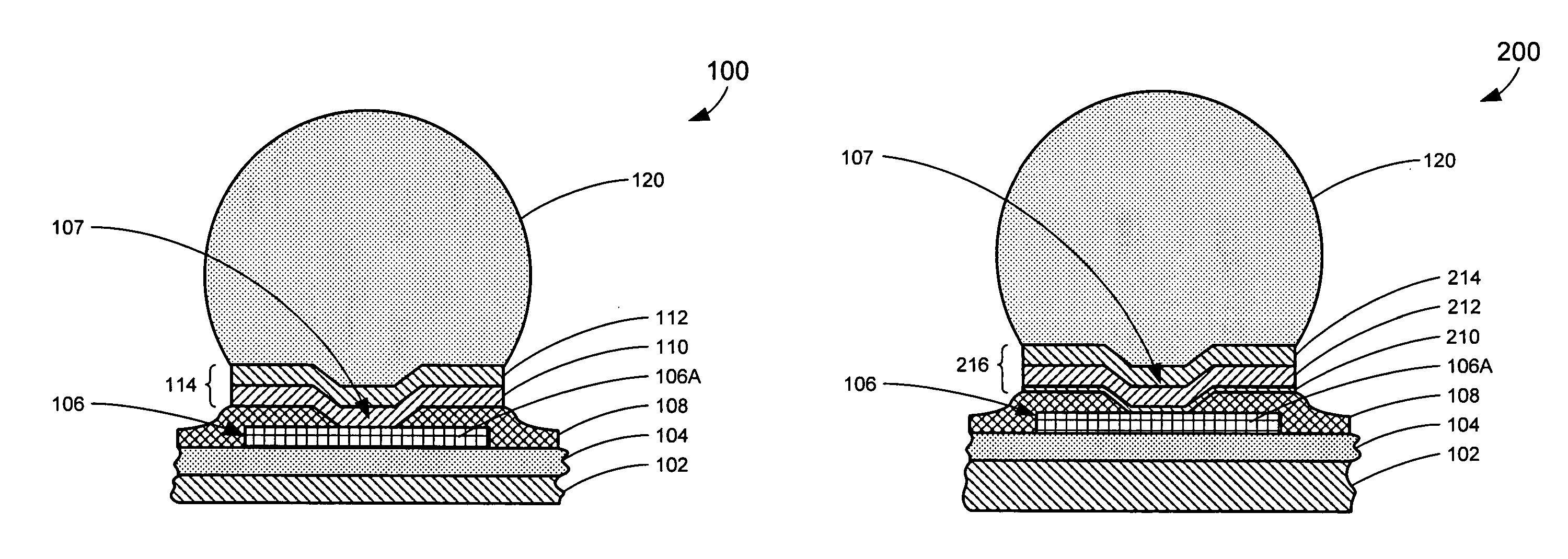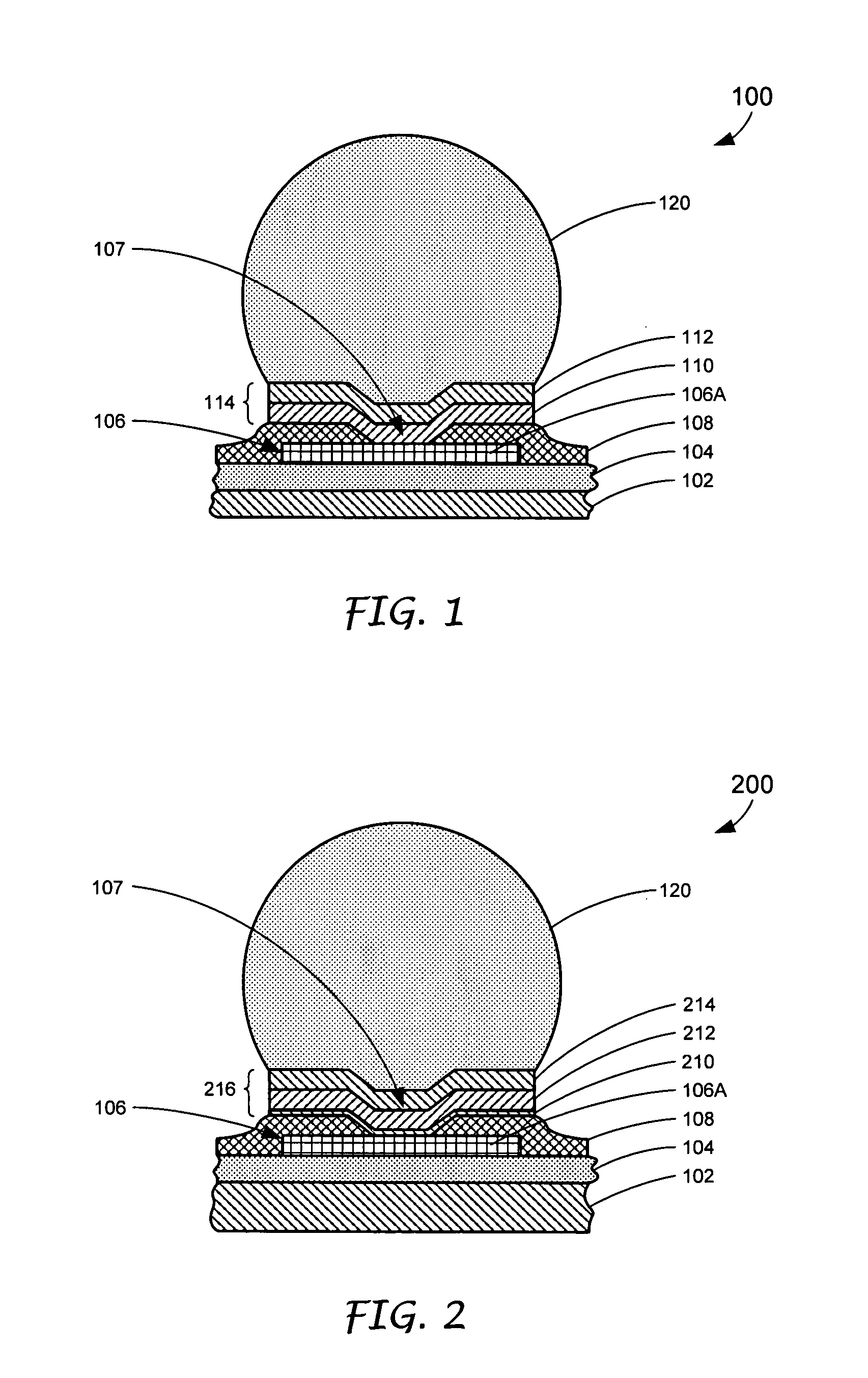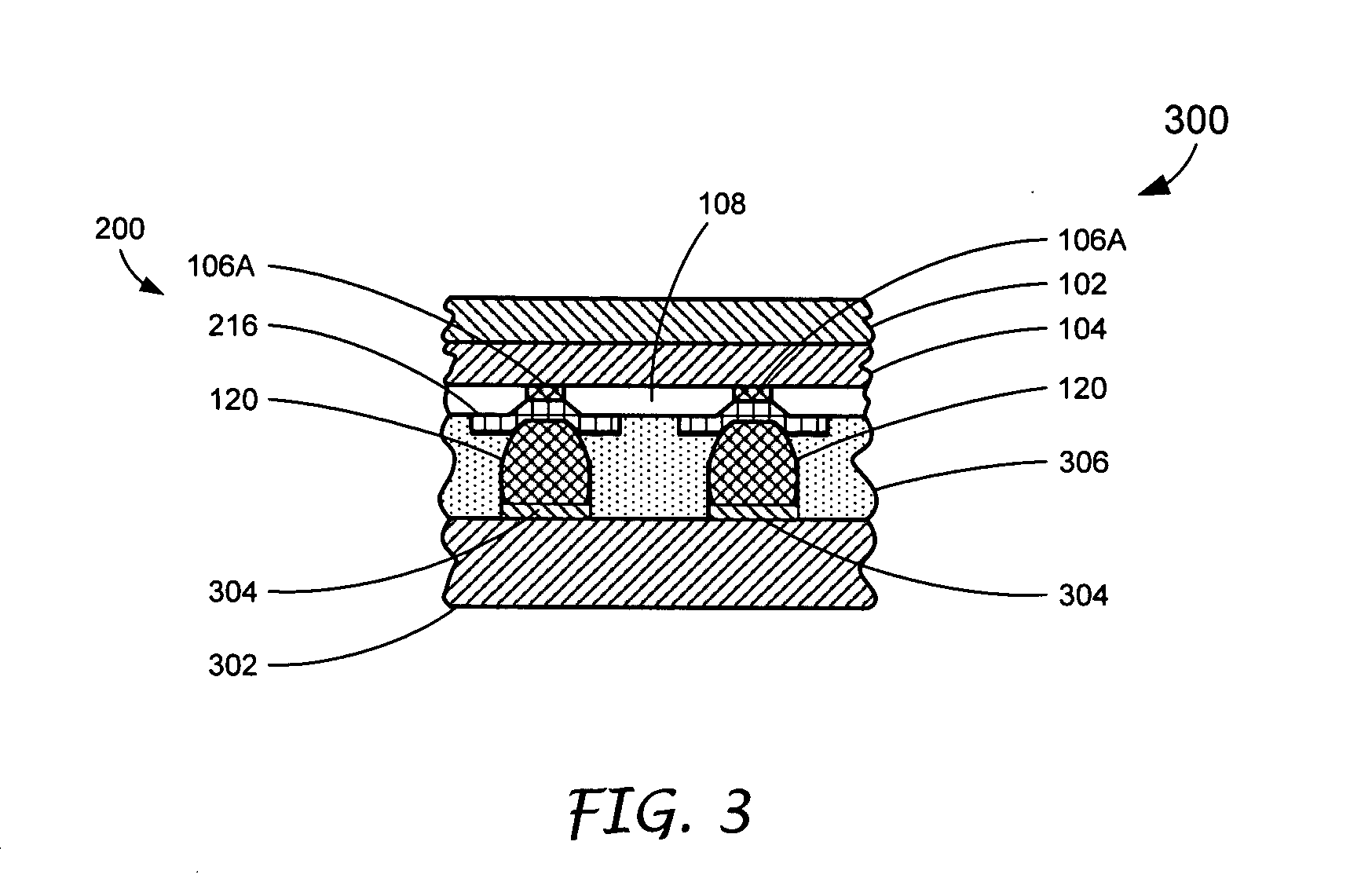Integrated circuit with low-stress under-bump metallurgy
a technology of integrated circuits and under-bump metallurgy, which is applied in the direction of semiconductor devices, semiconductor/solid-state device details, electrical apparatuses, etc., can solve the problems of affecting the copper consumption rate and subsequent intermetallic compound formation, the delamination of the solder ball, and the explosion of the on-chip routing
- Summary
- Abstract
- Description
- Claims
- Application Information
AI Technical Summary
Problems solved by technology
Method used
Image
Examples
Embodiment Construction
[0014] According to various embodiments of the present invention, an under-bump metallurgy (UBM) may be tailored to meet the requirements of low-stress under the constraints of a specified current carry capability and operating temperature. The UBMs described herein are particularly advantageous in applications where a solder bump is a tin-based solder alloy doped with copper. As noted above, a commonly used thin-film UBM is composed of 4000 angstroms of aluminum, 3500 angstroms of nickel / vanadium and 8000 angstroms of copper. As compared to the present state of prior art UBMs, a factor of three in reduction of film stress may be achieved for a UBM that includes 1000 angstroms of aluminum, 1000 angstroms of nickel / vanadium and 1000 angstroms of copper. According to another aspect of the present invention, a film stress factor reduction of about 15 can be achieved through the use of a UBM that includes 500 angstroms of aluminum and 1000 angstroms of copper.
[0015] As noted above, tin...
PUM
 Login to View More
Login to View More Abstract
Description
Claims
Application Information
 Login to View More
Login to View More - R&D
- Intellectual Property
- Life Sciences
- Materials
- Tech Scout
- Unparalleled Data Quality
- Higher Quality Content
- 60% Fewer Hallucinations
Browse by: Latest US Patents, China's latest patents, Technical Efficacy Thesaurus, Application Domain, Technology Topic, Popular Technical Reports.
© 2025 PatSnap. All rights reserved.Legal|Privacy policy|Modern Slavery Act Transparency Statement|Sitemap|About US| Contact US: help@patsnap.com



